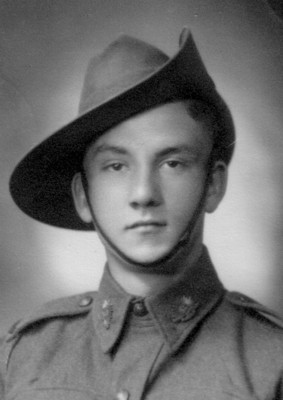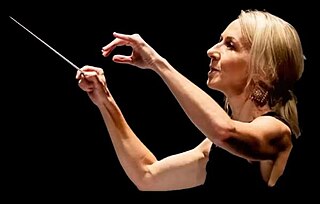
Opera Australia is the principal opera company in Australia. Based in Sydney, New South Wales, its performance season at the Sydney Opera House accompanied by the Opera Australia Orchestra runs for approximately eight months of the year, with the remainder of its time spent at the Arts Centre Melbourne, where it is accompanied by Orchestra Victoria. In 2004, the company gave 226 performances in its subscription seasons in Sydney and Melbourne, Victoria, attended by more than 294,000 people.
The Australian Ballet (TAB) is the largest classical ballet company in Australia. It was founded by J. C. Williamson Theatres Ltd and the Australian Elizabethan Theatre Trust in 1962, with the English-born dancer, teacher, repetiteur and director Dame Peggy van Praagh as founding artistic director. Today, it is recognised as one of the world's major international ballet companies and performs upwards of 150 performances a year.

Peggy Winsome Glanville-Hicks was an Australian composer and music critic.

Raymond Evenor Lawler is an Australian actor, dramatist, and theatre producer and director. His most notable play was his tenth, Summer of the Seventeenth Doll (1953), which had its premiere in Melbourne in 1955. The play changed the direction of Australian drama. The story of The Doll is preceded by Kid Stakes, set in 1937, when the characters of The Doll are young adults, and then Other Times, which is set in 1945 and includes most of the same characters.

Summer of the Seventeenth Doll is an Australian play written by Ray Lawler and first performed at the Union Theatre in Melbourne on 28 November 1955. The play is considered to be the most significant in Australian theatre history, and a "turning point", openly and authentically portraying distinctly Australian life and characters. It was one of the first truly naturalistic "Australian" theatre productions.
Richard John Mills is an Australian conductor and composer. He is currently the artistic director of Victorian Opera, and formerly artistic director of the West Australian Opera and artistic consultant with Orchestra Victoria. He was commissioned by the Victoria State Opera to write his opera Summer of the Seventeenth Doll (1996) and by Opera Australia to write the opera Batavia (2001).

The Princess Theatre, originally Princess's Theatre, is a 1452-seat theatre in Melbourne, Victoria, Australia. Established in 1854 and rebuilt in 1886 to a design by noted Melbourne architect William Pitt, it is the oldest surviving entertainment site on mainland Australia. Built in an elaborate Second Empire style, it reflects the opulence of the "Marvellous Melbourne" boom period, and had a number of innovative features, including state of the art electric stage lighting and the world's first sliding ceiling, which was rolled back on warm nights to give the effect of an open-air theatre.

Theatre of Australia refers to the history of the live performing arts in Australia: performed, written or produced by Australians.
The Victoria State Opera (VSO), based in Melbourne, Australia, was founded in Melbourne in 1962. The company, founded by Leonard Spira, was a move into grand opera by the then amateur Gilbert and Sullivan-oriented Victorian Light Opera Co. The name changed to the Victorian Opera Company in 1964 in a move to enable the company to perform a broader repertoire.
The Shifting Heart is a play written in 1957 in Australia by Richard Beynon, it is an insight to the psychology of racism and its victims. In the background of 1950s Collingwood, Melbourne.
The Opera Australia Orchestra is a full-time salaried orchestra, and a wholly owned subsidiary of Opera Australia. It is one of three salaried orchestras in Sydney, along with the Sydney Symphony Orchestra and the Australian Chamber Orchestra. The OAO performs almost exclusively in the Opera House Orchestra pit of the Joan Sutherland Theatre.
Joseph Mozart Post was an Australian conductor and music administrator. He made an unrivalled contribution to the development of opera-conducting in Australia and was, in Roger Covell's words, the 'first Australian-born musician to excel in this genre'. As an orchestral conductor, he was judged a 'good all-round man': he was well regarded for his enthusiasm, clarity and economy of gesture, but he was not associated with inspiring or challenging musicianship. Nonetheless, his ability to take over conducting assignments at very short notice became legendary and he was often greeted with 'rave' reviews.
Lauris Margaret Elms is an Australian retired contralto, renowned for her roles in opera and lieder and as a recording artist.
Tessitura is an enterprise application used by performing arts and cultural organisations to manage their activities in ticketing, fundraising, customer relationship management, and marketing. It refers to itself as "arts enterprise software."
Lloyd Berrell was a New Zealand actor who played Reuben "Roo" Webber in the original Sydney production of Summer of the Seventeenth Doll. He worked extensively in Australian radio and theatre, appearing in a large portion of the films being shot locally at that time. He also starred in the original stage production of Sumner Locke Elliott's Rusty Bugles as well as numerous productions for the Mercury Theatre.

John Ewen Cameron was an Australian baritone singer, who made most of his career in Britain. He became known for his portrayal of characters in modern operas by composers from Australia, Britain and continental Europe, and for his recordings with conductors such as Sir Thomas Beecham, Sir Adrian Boult, the young Colin Davis, and particularly Sir Malcolm Sargent.

Robin Casper Lovejoy, OBE was an Australian director, actor, and designer best known for his work on television and in theatre. He was one of Australia's leading theatre directors of the 1960s and 1970s and significantly influenced the Australian drama and theatre stage.

Brian James Stacey, was an Australian conductor who started his career with the Queensland Ballet, the Australian Ballet, and Victoria State Opera, latterly becoming known for his work in Australian musical theatre but continuing his cross-genre career to the end of his life.

Vanessa Scammell is an Australian pianist and conductor in the field of ballet, musical theatre, concert, and opera.
The Melbourne Olympic Arts Festival was an arts festival held in conjunction with the 1956 Summer Olympics held in Melbourne, Australia. Melbourne was the first Games to have an arts festival as part of the official program.









